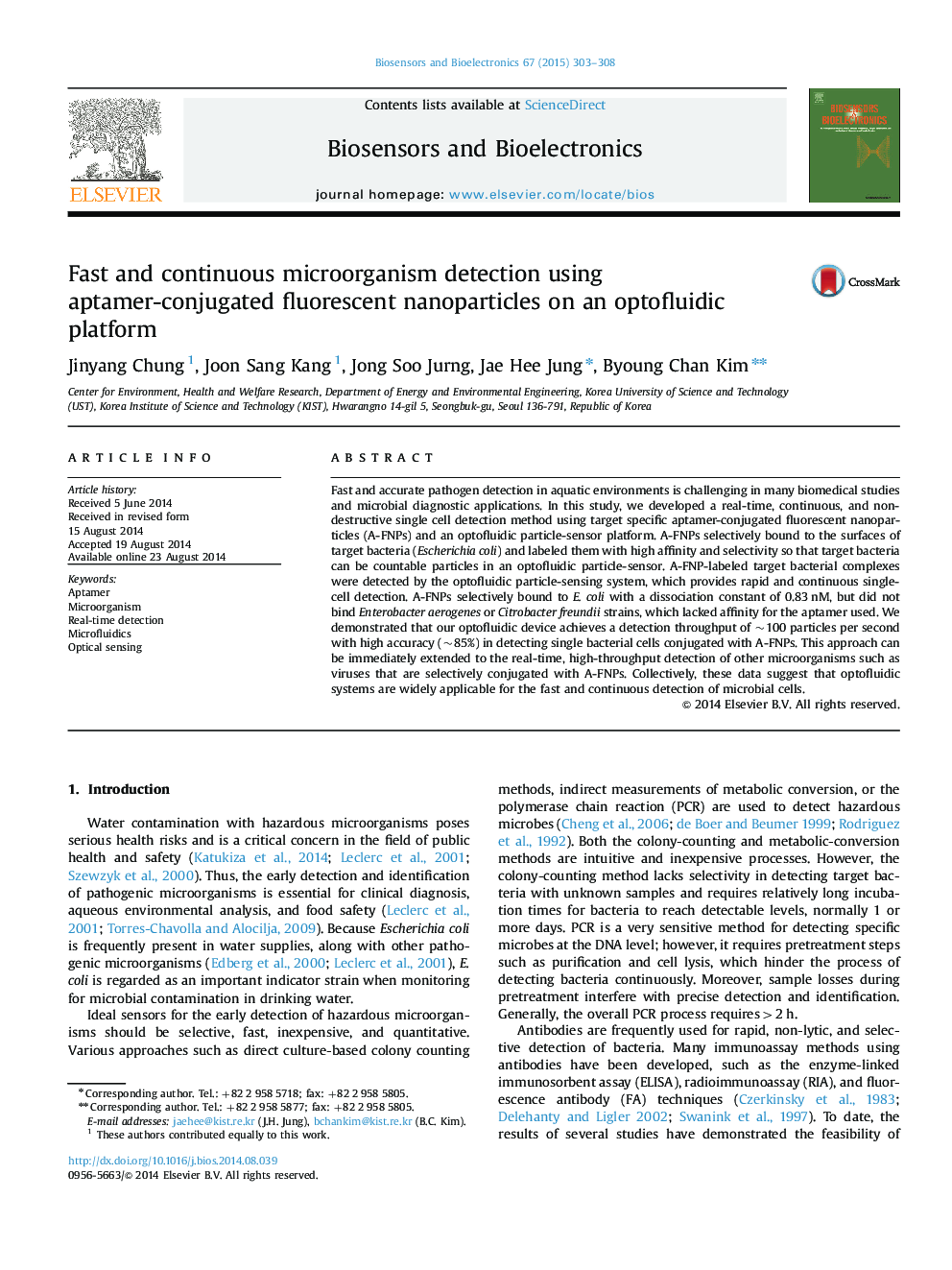| Article ID | Journal | Published Year | Pages | File Type |
|---|---|---|---|---|
| 7232583 | Biosensors and Bioelectronics | 2015 | 6 Pages |
Abstract
Fast and accurate pathogen detection in aquatic environments is challenging in many biomedical studies and microbial diagnostic applications. In this study, we developed a real-time, continuous, and non-destructive single cell detection method using target specific aptamer-conjugated fluorescent nanoparticles (A-FNPs) and an optofluidic particle-sensor platform. A-FNPs selectively bound to the surfaces of target bacteria (Escherichia coli) and labeled them with high affinity and selectivity so that target bacteria can be countable particles in an optofluidic particle-sensor. A-FNP-labeled target bacterial complexes were detected by the optofluidic particle-sensing system, which provides rapid and continuous single-cell detection. A-FNPs selectively bound to E. coli with a dissociation constant of 0.83Â nM, but did not bind Enterobacter aerogenes or Citrobacter freundii strains, which lacked affinity for the aptamer used. We demonstrated that our optofluidic device achieves a detection throughput of ~100 particles per second with high accuracy (~85%) in detecting single bacterial cells conjugated with A-FNPs. This approach can be immediately extended to the real-time, high-throughput detection of other microorganisms such as viruses that are selectively conjugated with A-FNPs. Collectively, these data suggest that optofluidic systems are widely applicable for the fast and continuous detection of microbial cells.
Related Topics
Physical Sciences and Engineering
Chemistry
Analytical Chemistry
Authors
Jinyang Chung, Joon Sang Kang, Jong Soo Jurng, Jae Hee Jung, Byoung Chan Kim,
